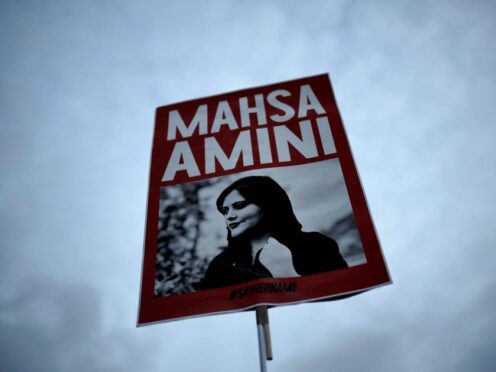
Iran is responsible for the “physical violence” that led to the death of Mahsa Amini in September 2022 and sparked nationwide protests against the country’s mandatory headscarf, or hijab, laws and its ruling theocracy, a UN fact-finding mission said.
The stark declaration came in a wide-ranging initial report submitted to the UN Human Rights Council by the Fact-Finding Mission on Iran that concluded Tehran committed “crimes against humanity” through its actions.
It also found that the Islamic Republic employed “unnecessary and disproportionate use of lethal force” to put down the demonstrations that erupted following Ms Amini’s death.
It also found that Iranian security forces sexually assaulted detainees.

Ms Amini’s death in September 2022 sparked nationwide protests against morality laws in the Arab nation, resulting in a months-long security crackdown that killed more than 500 and saw an excess of 22,000 people detained.
The report is unlikely to change the trajectory of the Iranian government, now more firmly in the hands of hard-liners after a low-turnout vote last week put them back in charge of the country’s parliament.
However, it provides further international pressure on Tehran amid wider Western concerns about its advancing nuclear programme, Iran’s arming of Russia in Moscow’s war on Ukraine, and the continued harassment and imprisonment of activists, which includes Nobel Peace Prize laureate Narges Mohammadi.
“The protests were unprecedented because of the leadership of women and youth, in their reach and longevity and, ultimately, the state’s violent response,” the report said.
Ms Amini, 22, died in a hospital following her arrest by the country’s morality police over allegedly not wearing her hijab to the liking of the authorities.
She was taken to Iran’s Vozara detention facility to undergo a “re-education class”, but collapsed after 26 minutes.
She was moved to a hospital 30 minutes later, according to the report.
Iran has denied being responsible for her death and disputes she was beaten.
At times, authorities have pointed to a medical condition Ms Amini had from childhood after a surgery.
The UN report dismissed that as a cause of her death.
The panel “established the existence of evidence of trauma to Ms Amini’s body, inflicted while in the custody of the morality police”.
“Based on the evidence and patterns of violence by the morality police in the enforcement of the mandatory hijab on women, the mission is satisfied that Ms Amini was subjected to physical violence that led to her death,” the report said.
The report stops short, however, of blaming anyone specifically for harming Ms Amini.
The protests that followed Amini’s death started first with the chant: “Women, Life, Freedom.”
However, the protesters’ chanting and cries soon grew into open calls of revolt against Iranian Supreme Leader Ayatollah Ali Khamenei.
The UN report found Iranian security forces used shotguns, assault rifles, and submachine guns against demonstrators “in situations where there was no imminent threat of death or serious injury” to them and were “thereby committing unlawful and extrajudicial killings”.
It also found a pattern of protesters being shot intentionally in the eye.
“The mission notes the deterrent and chilling effect of such injuries, as they permanently marked the victims, essentially ‘branding’ them as protesters,” the report reads.

The report also states that some detainees faced sexual violence, including rape, the threat of rape, forced nudity, groping and electrocution of their genitals.
“The security forces played on social and cultural stigma connected to sexual and gender-based violence to spread fear and humiliate and punish women, men and children,” it said.
The panel also acknowledged it continued to investigate the 2023 death of teenager Armita Garavand, who died after falling on the Tehran Metro in what activists allege was an attack over her not wearing a hijab.
Ms Geravand’s parents appeared in a state media video at the time saying a blood pressure issue, a fall, or perhaps both contributed to their daughter’s death.
“In actions reminiscent of Ms. Amini’s case, the state authorities took measures to obfuscate the circumstances leading to Ms. Garavand’s death,” the report says.
It also noted a suspected spate of poisonings targeting Iranian schoolgirls without drawing conclusions on what transpired in the incidents.
US deputy special envoy for Iran Abram Paley said the “whole world is taking notice” of the report and “its conclusion that many of the serious human rights violations that have taken place in Iran may amount to crimes against humanity”.
“It is imperative that the Fact-Finding Mission continue its important work,” he wrote online.
Activists have welcomed the release of the report.
Executive director of the New York-based Centre for Human Rights in Iran, Hadi Ghaemi, said of the findings: “The Islamic Republic’s violent repression of peaceful dissent and severe discrimination against women and girls in Iran has been confirmed as constituting nothing short of crimes against humanity.”

Enjoy the convenience of having The Sunday Post delivered as a digital ePaper straight to your smartphone, tablet or computer.
Subscribe for only £5.49 a month and enjoy all the benefits of the printed paper as a digital replica.
Subscribe